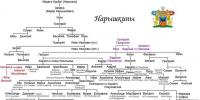Presentation on the topic “Faraday’s Laws. School Powerpoint Presentations Reinforcing a New Topic
Slide 1
Slide description:
Slide 2
Slide description:
Slide 3
Slide description:
Slide 4
Slide description:
Slide 5
Slide description:
Slide 6
Slide description:
Slide 7
Slide description:
Slide 8
Slide description:
Slide 9
Slide description:
Slide 10
Slide description:
Slide 11
Slide description:
Slide 12
Slide description:
Slide 13
Slide description:
Slide 14
Slide description:
Slide 15
Slide description:
Slide 16
Slide description:
Slide 17
Slide description:
Slide 18
Slide description:
Slide 19
Slide description:
Slide 20
Slide description:
Slide 21
Slide description:
Slide 22
Slide description:
Slide 23
Slide description:
Faraday's contribution to the doctrine of the atomic structure of matter is no less important. Let us remember his laws of electrolysis. After all, it is from them that the conclusion follows about the discreteness, intermittency of matter and electricity. A few years after Faraday's death, the charge of the "atom of electricity" - the electron - was calculated from the laws of electrolysis. Faraday's contribution to the doctrine of the atomic structure of matter is no less important. Let us remember his laws of electrolysis. After all, it is from them that the conclusion follows about the discreteness, intermittency of matter and electricity. A few years after Faraday's death, the charge of the "atom of electricity" - the electron - was calculated from the laws of electrolysis.
Slide 24
Slide description:
Slide 25
Slide description:
Slide 26
Slide description:
Slide 27
Slide description:
Slide 28
Slide description:
Slide 29
Slide description:
Slide 30
Slide description:
Slide 31
Slide description:
Let's insert coil A into solenoid B and fix them motionless (Fig. 3). In this case, there is no current in the solenoid. But at the moments of closing or opening the circuit of coil A, an induction current appears in solenoid B. The same thing happens when the current in coil A increases or decreases by changing the resistance R. In what follows, the circuit of coil A connected to the source of electrical energy will be called primary, and the circuit of solenoid B, in which the induced current occurs, will be called secondary. We will apply the same names to the coils themselves.
Let's insert coil A into solenoid B and fix them motionless (Fig. 3). In this case, there is no current in the solenoid. But at the moments of closing or opening the circuit of coil A, an induction current appears in solenoid B. The same thing happens when the current in coil A increases or decreases by changing the resistance R. In what follows, the circuit of coil A connected to the source of electrical energy will be called primary, and the circuit of solenoid B, in which the induced current occurs, will be called secondary. We will apply the same names to the coils themselves.
Slide description:
Slide 37
Slide description:
Slide 40
Slide description:
Slide 41
Slide 2
“A happy accident falls only to the lot of a prepared mind” L. Pasteur
Slide 3
Michael Faraday (22 September 1791 – 25 August 1867)
English physicist, chemist, founder of the doctrine of the electromagnetic field, member of the Royal Society of London
Slide 4
early years
Michael was born in Newngton Butts (now Greater London) from the age of thirteen. Michael began working as a supplier of books and newspapers. At the age of 14 he went to work in a bookshop, where he studied and studied bookbinding at the City Philosophical Society, where he attended popular science lectures on physics and astronomy and participated in debates
Slide 5
Beginning of scientific activity
1812 Faraday writes to the scientist Davy asking him to hire him at the Royal Institution in 1813. Michael becomes Sir Davy's personal assistant and goes on a tour of Europe together.
Slide 6
First independent research
Slide 7
"Turn magnetism into electricity" entry in Faraday's laboratory journal
After opening in 1820. H. Oersted magnetic action electric current Faraday became fascinated by the problem of the connection between electricity and magnetism in 1831. Faraday experimentally discovered the phenomenon of electromagnetic induction
Slide 8
Discoveries and inventions
In 1833-1834, the scientist established the laws of electrolysis, experimentally showed that the force of interaction between charges changes depending on the environment, and invented a dynamo, which later became known as a direct current generator in 1846. Faraday established a connection between magnetic and optical phenomena, which later became a confirmation of the electromagnetic theory of light
Slide 9
Public lectures on physics and chemistry for children at the Royal Institution of London are still given to this day. Where Faraday read them.
“...I can only express to you my wish that you may stand with honor the comparison with a candle, that is, that you may be a torch to those around you, and that in all your actions you will imitate the beauty of the flame, honestly and effectively fulfilling your duty to humanity.” Faraday's lectures on the "Chemical History of the Candle"
Slide 10
Monument to Michael Faraday in London. Located near the Royal Institute.
View all slides
The copper coulometer is most common in laboratory research practice, because it is easy to manufacture and quite accurate. The accuracy of determining the amount of electricity is 0.1%. The coulometer consists of two copper anodes and a thin copper foil cathode located between them. The electrolyte in a copper coulometer is an aqueous solution of the following composition: CuSO4 ? 5H2O, H2SO4 and ethanol C2H5OH. Sulfuric acid increases the electrical conductivity of the electrolyte and, in addition, prevents the formation of basic copper compounds in the cathode space, which can be adsorbed on the cathode, thereby increasing its mass. H2SO4 in the electrolyte of a copper coulometer is necessary to prevent the accumulation of Cu1+ compounds that can form as a result of the disproportionation reaction: Cu0 + Cu2+ ? 2Cu+ Ethyl alcohol is added to the electrolyte to obtain more finely crystalline, compact cathode deposits and to prevent oxidation of the copper electrodes of the coulometer. The amount of electricity passed is judged by the change in the mass of the cathode, before and after electrolysis. Most precise definition The amount of electricity passing through an electrochemical system can be obtained using a silver coulometer. In this case, the determination accuracy is 0.005%.
Michael Faraday English experimental physicist and chemist 09/22/1791 -25. 08. 1867
Michael Faraday English experimental physicist and chemist 09/22/1791 -25. 08. 1867
Michael Faraday English experimental physicist and chemist 09/22/1791 -25. 08. 1867
If a person like Michael Faraday had not appeared in world history, our life would hardly be what it is now. We would not have computers, there would be no electricity, there would be no stainless steel, there would be no copper wires, aluminum spoons and much more. But he appeared and did so much greatest discoveries, each of which could have made him successful even if he had discovered nothing else. Where did he come from and how did he come to science? How could he turn the world upside down?
How did it all start? Michael Faraday was born on September 22, 1791 on the outskirts of London in the family of a blacksmith. After graduating primary school, from the age of 12 he worked as a newspaper delivery boy, and in 1804 he became an apprentice to the bookbinder Ribot, who in every possible way encouraged Faraday’s passionate desire for self-education.
Michael worked in the bookstore for 7 years, someone could have wasted these years, but not Michael. During all this time, he gained much more knowledge than his peers. His family encouraged his thirst for knowledge; his brother even gave him money to attend lectures at a philosophical society. There, Michael enthusiastically listened to lectures on physics and astronomy, but not only did he listen, he also wrote down what was said. One day, one of the visitors to the bookstore gave Michael a ticket to attend Humphry Davy's lectures. Michael was so impressed by what he heard that he did not fail to send his notes and letter to Professor Davy. Davy was surprised by Faraday's knowledge and after some time took him on as a laboratory assistant at Queen's University.
In 1816, Michael began giving a course of lectures on physics and chemistry at the Society for Self-Education. Michael paid great attention to these lectures, since he did not have the opportunity to attend such lectures as a child, and also developed an oratorical talent. His lectures did more to popularize science than all previous scientific works.
Scientific discoveries 1821 - created the first model of an electric motor 1824 - Received liquid chlorine 1825 - Received hexochlorane, hexochlorane was widely used in the 20th century as an insecticide). 1831 - made the discovery of electromagnetic induction. 1832 - discovered the phenomenon of electrolysis - passing current through solutions to release valuable components; now electrolysis is widely used in metallurgy and chemical technology. 1833 - invented the voltmeter 1845 - discovered the phenomenon of rotation of the plane of polarization of light in a magnetic field (Faraday effect). 1845 - discovered diamagnetism, 1847 - discovered paramagnetism.
In 1840, even before the discovery of the law of conservation of energy, Faraday expressed the idea of the unity of the “forces” of nature ( various types energy) and their mutual transformation. He introduced ideas about lines of force, which he considered physically existing. Faraday's ideas about electricity and magnetic fields had a great influence on the development of all physics. In 1832, Faraday suggested that the propagation of electromagnetic interactions is a wave process occurring at a finite speed; in 1845 he first used the term “magnetic field”.
Introduced new terms - cathode, - anode, - ion, - electrolysis - electrode
Faraday made so many discoveries that now, wherever you look, we use his discoveries. All of his theories were subsequently scientifically substantiated, which cannot be said about many other great scientists. For his outstanding services, the Royal Society of Great Britain established the Faraday Medal, one of the most prestigious awards in the scientific world.
Michael Faraday's secret to success 1. Use what you have at hand; 2. Don't be afraid of authorities; 3. Learn from others; 4. Tell us about your discoveries; 5. Try to get to the bottom of the truth; 6. Look for connections in seemingly unrelated phenomena; 7. Make discoveries that change the world.



